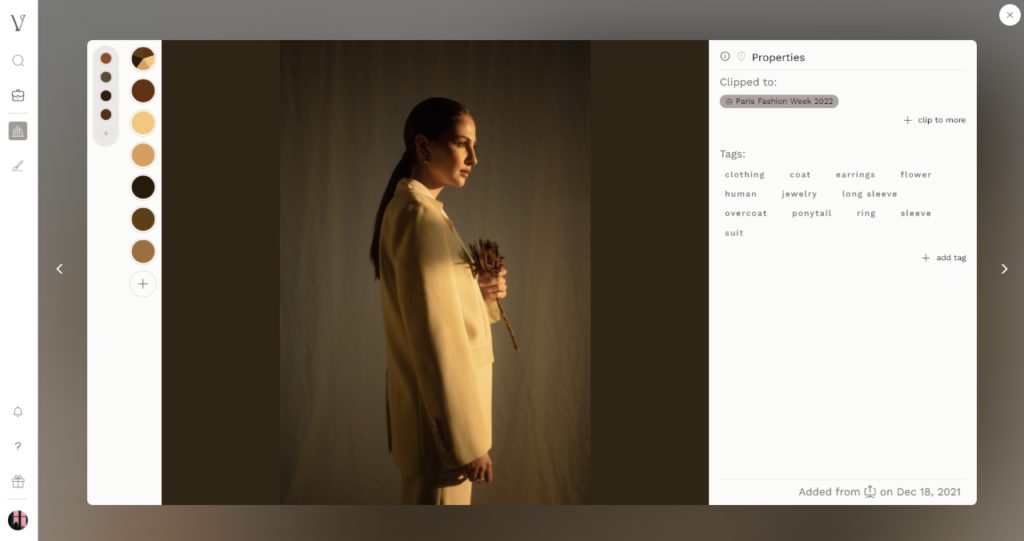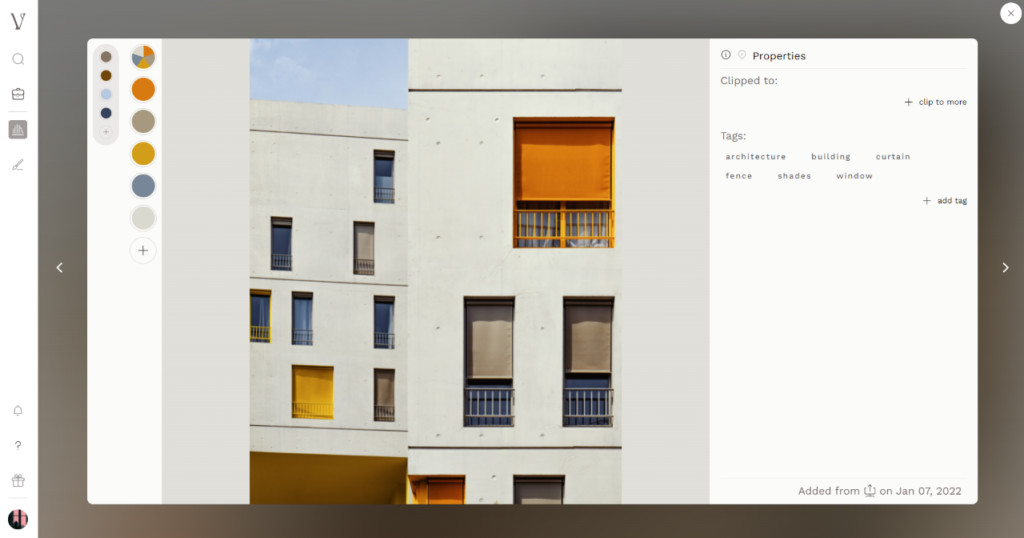Visualist Unlocks Search By Colour for Creatives

Visualist is an app that enables creative designers to curate and manage sources of inspiration. In a visual database, text-based searching isn’t enough. Collaborating with Future Fashion Factory researchers, Visualist is using AI and machine learning to enable users to search by colour. By building a more intuitive pathway for navigating by visual rather than textual cues, the project will open up new creative possibilities for designers as part of the startup’s enhanced product offering.
Most databases rely on text searches to find relevant results. But for creatives, this model is restrictive – everyone interprets images differently, and often it is hard to describe an aesthetic in words. Visualist seeks to give creatives a visual pathway through a visual database. Searching by colour supports the creative process for designers while improving the user experience of the app, provided that it reflects how humans understand colour.
“Some of our team have a background in computer vision and AI, but we needed a robust technical base for our colour detection algorithm,” says Cherie Yang, founder of Visualist. “We could then combine this with our product knowledge and talking to customers directly to build a product that worked for them.”
Cherie and her team collaborated with Professor Stephen Westland, Dr Qianqian Pan and Jing Lin at the University of Leeds. As a professor of colour science and technology and leader of Future Fashion Factory’s data-driven design research, Steve was well-placed to support the project with his understanding of AI and machine learning.
“What Visualist needed was almost exactly what we were developing,” he explains. “What we’re doing is potentially quite disruptive, and a startup is a great collaborator for something so ambitious.”

While Steve and his colleagues worked on training the algorithm using unsupervised machine learning, Visualist used an innovative approach to acquire data directly from their own users. Every week on the startup’s Instagram Stories, followers took part in colour-matching exercises that showed how humans perceive colour. The results were shared so the researchers could compare the algorithm’s performance against real users.
The project also gave the researchers an opportunity to push their work further. Identifying the important colours in the image is crucial: for example, in a catwalk fashion show, the colour of the stage matters less to the viewer than the garments. Using supervised machine learning, Steve’s team trained the algorithm to identify important colours based on their closeness to each other in the image, such as garments in an outfit.
“We could already detect dominant colours based on which appeared most often, but looking for colours that are spatially localised was totally new,” Steve explains.
Colour detection and colour search are now launched in Visualist, while additional features are currently being implemented around colour relationships to offer users even more freedom. Feedback has been extremely positive from customer demonstrations.
“Users love it because it’s just fun to search by colour,” Cherie adds. “Colour is fun, colour is joyful, and we want them to enjoy playing in an environment that fuels creativity.”
Having achieved so much in their first collaboration, the project partners are keen to keep working together to push the boundaries of AI in colour. Combining technical, creative and commercial expertise with real user data, the potential to keep building Visualist’s product offering through cutting edge research and collaboration continues to grow.
